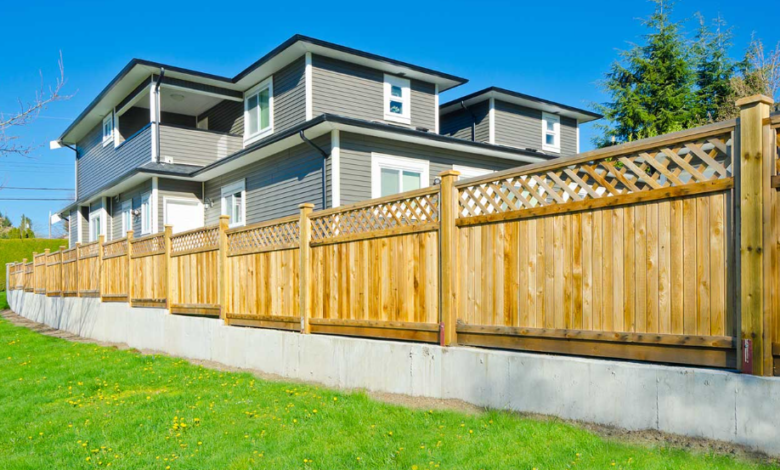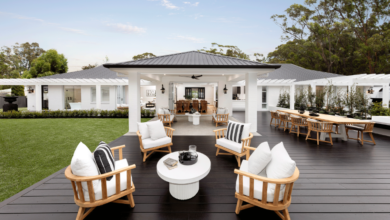Tips for Choosing the Right Fence for Your Property

When it comes to enhancing the look, privacy, and security of your home, installing the right type of fence can make all the difference. Whether you’re looking for a traditional wooden fence, a durable aluminum solution, or even an eco-friendly living fence, there are many options to fit your specific needs. If you’re located in the Charleston Tri-County area, working with a local professional like FenceCraft ensures you get the best results tailored to your environment and preferences.
In this article, we’ll explore the most popular types of residential fencing — including their benefits, use cases, and what to consider when making your choice.
1. Wooden Fences: Timeless Charm and Natural Beauty
Wooden fences are a classic favorite among homeowners for their natural appearance and versatile design. Whether you want a rustic look or a clean, painted finish, wood can adapt to your aesthetic needs.
Benefits of Wooden Fencing:
. Aesthetic Versatility: Wood can be stained, painted, or carved into various styles (e.g., picket, privacy, or shadowbox).
. Cost-Effective: Typically more affordable than metal or vinyl alternatives.
. Eco-Friendly: When sourced sustainably, wood is a renewable and biodegradable material.
. Customizable Height and Shape: Great for privacy or decorative use.
Considerations:
. Maintenance: Wood requires periodic sealing, staining, or painting to prevent rot and warping.
. Durability: Depending on the species (cedar, pine, redwood), wooden fences may be more prone to weather damage over time.
Best For:
. Homeowners who value curb appeal, privacy, and a customizable fence that blends with nature.
2. Aluminum Fences: Sleek, Secure, and Low-Maintenance
Aluminum fencing is a popular option for homeowners who want a modern, elegant look without high maintenance. It offers strong protection and withstands harsh weather conditions without rusting.
Benefits of Aluminum Fencing:
. Rust-Resistant: Ideal for coastal areas like Sullivan’s Island and other Charleston neighborhoods.
. Low Maintenance: No painting or sealing needed — occasional cleaning is enough.
. Elegant Design: Offers the appearance of wrought iron without the heavy price tag or upkeep.
. Secure: Excellent for pet and child containment, especially when paired with locking gates.
Considerations:
. Limited Privacy: Aluminum fences are usually open picket style, which doesn’t block the view.
. Higher Initial Cost: More expensive upfront than wood, but lower maintenance costs long term.
Best For:
. Homeowners seeking a sophisticated, durable fence with minimal upkeep, especially in coastal environments.
3. Living Fences: A Green Alternative
Living fences are made from hedges, shrubs, or trees that are grown and maintained to form a natural barrier. While not the most conventional, they offer unique aesthetic and environmental advantages.
Benefits of Living Fences:
. Eco-Friendly: They absorb CO₂ and provide habitat for birds and beneficial insects.
. Natural Beauty: A green fence can blend beautifully with landscaping.
. Noise Reduction: Dense plantings can reduce traffic or neighbor noise.
. Privacy and Shade: Properly maintained, living fences can offer excellent visual screening and even help cool your yard.
Considerations:
. Time to Grow: Living fences require time and care to reach full height and thickness.
. Ongoing Maintenance: Regular pruning and watering are essential.
. Zoning & Local Ordinances: Check your area’s regulations on fence types and plant species.
Best For:
. Environmentally conscious homeowners who are patient and willing to invest in long-term landscaping beauty.
See also: Lutron: The Ultimate Transformational Tool With The Smart Home Control System
Comparing Fence Types: Which One Suits Your Needs?
| Fence Type | Best For | Maintenance | Privacy Level | Cost |
| Wooden | Classic look, customization | Medium-High | High | Medium |
| Aluminum | Low maintenance, modern homes | Low | Low | High |
| Living | Eco-friendly, natural yards | High | Medium-High | Variable |
What to Consider Before Choosing a Fence
Choosing the right fence involves more than just picking the material. Here are some key points to keep in mind:
. Purpose: Are you looking for privacy, security, decoration, or pet containment?
. Local Regulations: Always check HOA and city ordinances about fence height, placement, and materials.
. Climate: In the Charleston Tri-County area, heat, humidity, and salty coastal air can affect fence durability.
. Budget: Consider both the installation cost and long-term maintenance expenses.
. Style: A fence should complement your home’s exterior and landscape.
Why Work with a Local Expert?
Hiring a local fencing company can save time, money, and stress. They understand the specific climate challenges in areas like Sullivan’s Island and can recommend the best materials and styles for longevity and compliance.
Local pros like fencecraftsc.com also know the zoning laws, have relationships with local suppliers, and are familiar with neighborhood trends — helping ensure your fence looks great and performs well for years to come.
Final Thoughts: Build Your Perfect Fence with Confidence
Whether you’re drawn to the classic appeal of wood, the sleek durability of aluminum, or the green benefits of a living fence, your choice should align with your property’s goals and your lifestyle. And while DIY is tempting, professional guidance is key to a smooth installation and long-lasting result.
If you’re in the Charleston area, working with professionals like FenceCraft ensures your fencing project is done right — from planning and permits to material selection and installation. Visit FenceCraft to learn more or request a quote tailored to your property.


